5 most common causes of reported house fires
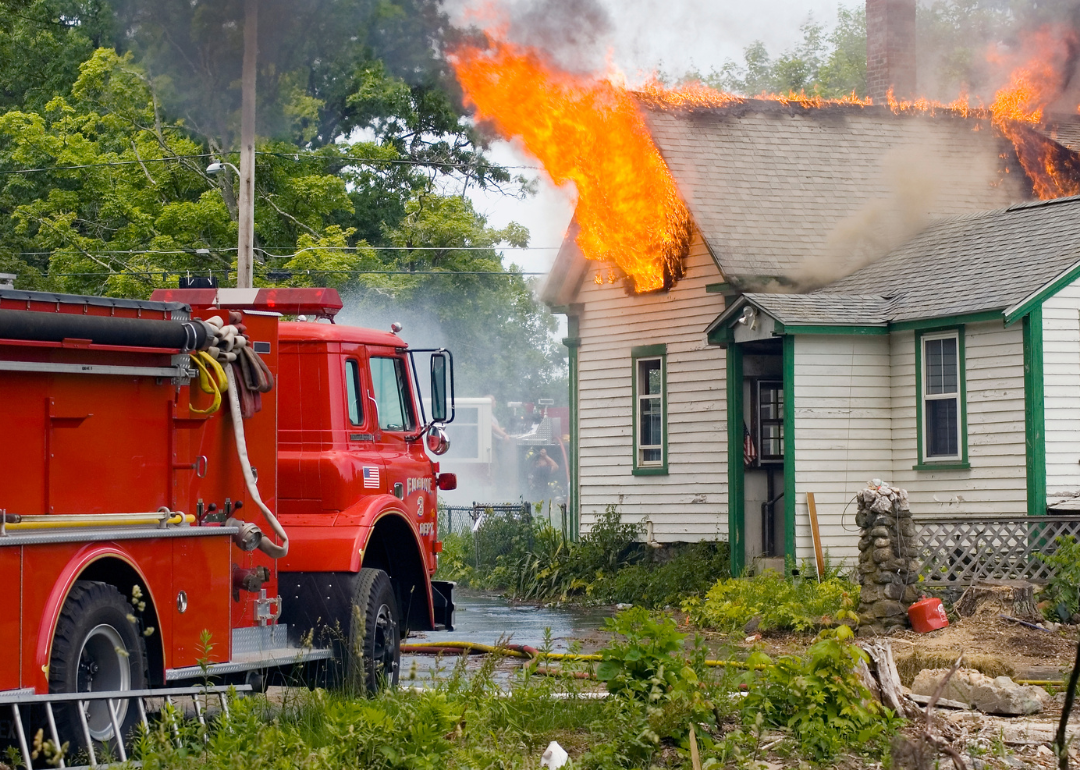
Canva
5 most common causes of reported house fires
A house on fire with a fire truck outside.
As the temperature drops, the appeal of curling up on the sofa with a fluffy blanket and a cup of hot chocolate increases. Many people tend to stay indoors in the cooler months, their homes becoming warm, safe havens occasionally permeated by the aroma of holiday meals or gingerbread cookies.
But with more time spent indoors, furnaces and heaters, and kitchen appliances working over time, these seemingly cozy circumstances can quickly turn tragic. Westfield compiled a list of the most common causes of reported house fires from data collected by the National Fire Protection Association from 2015 to 2019. The numbers are unambiguous: House fires are more frequent in the cooler months. The report also shows the rate of fires peaks from 5 p.m. to 8 p.m., when people with typical daytime work, school, and activity schedules return home.
Fire departments across the U.S. responded to an estimated average of 346,800 home fire calls each year between 2015 and 2019. An average of 2,620 people died each year in that timeframe, and over 11,000 were injured. Property damage due to house fires was $7.3 billion.
The following are the most common culprits of house fires, all of which should be placed on your household safety watchlist to prevent what should be a joyous time of year taking a potentially devastating turn.
![]()

Canva
#5. Smoking materials
Ashtray on table with coffee cup and lighter.
– Percent of total house fires caused by smoking materials: 5%
– Percent of total house fire deaths: 23% (#1 leading cause)
– Percent of total house fire injuries: 9% (#4 leading cause)
– Percent of total direct house fire property damage: 7% (#6 leading cause)
In the 1980s, more than 30% of the U.S. population smoked; by 2019, the number had just about halved. This decrease in the smoking population lowered the number of house fires caused by smoking materials, but not their lethality.
According to the NFPA’s report, while the number of deaths from fires sourced to smoking materials in 2016 was 64% lower than in 1980, it was also the highest since 2006. Having a physical disability, being asleep, being under the influence of alcohol or drugs, and other conditions limiting people’s ability to escape from smoke and flames contribute to smoking-related fire casualties.
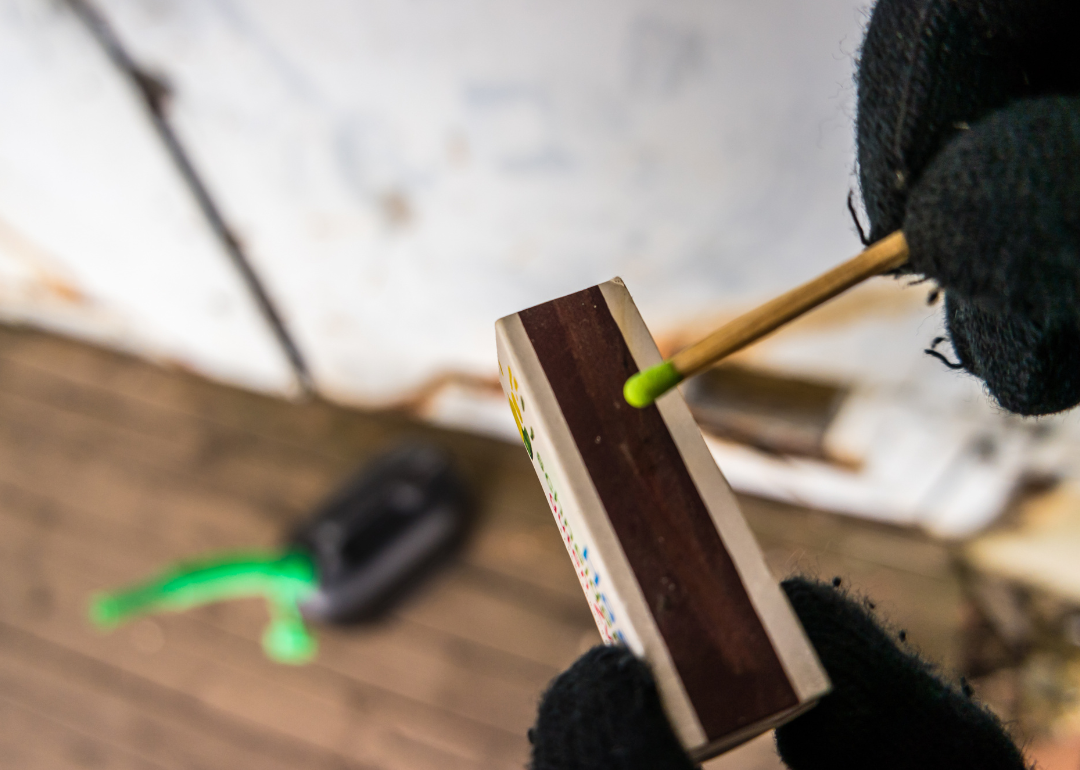
Animaflora PicsStock // Shutterstock
#4. Intentional
A close up of a person’s hands in black gloves lighting a match before committing arson.
– Percent of total house fires caused by intentional fires: 7%
– Percent of total house fire deaths: 15% (#5 leading cause)
– Percent of total house fire injuries: 7% (#5 leading cause)
– Percent of total direct house fire property damage: 8% (#5 leading cause)
Intentionally started fires may originate through everyday activities like lighting a barbeque grill or a backyard bonfire. Such actions could lead to accidental house fires. Controlled burns—those used to clear land or to protect forest health—can also spiral out of control leading to property damage and loss of life.
Arson, defined as “the act of knowingly burning personal property without consent or with unlawful intent,” also falls into this category. The penalties for arson in private houses vary between states and by the degree of damage. Intentional fires cause about 400 deaths each year.
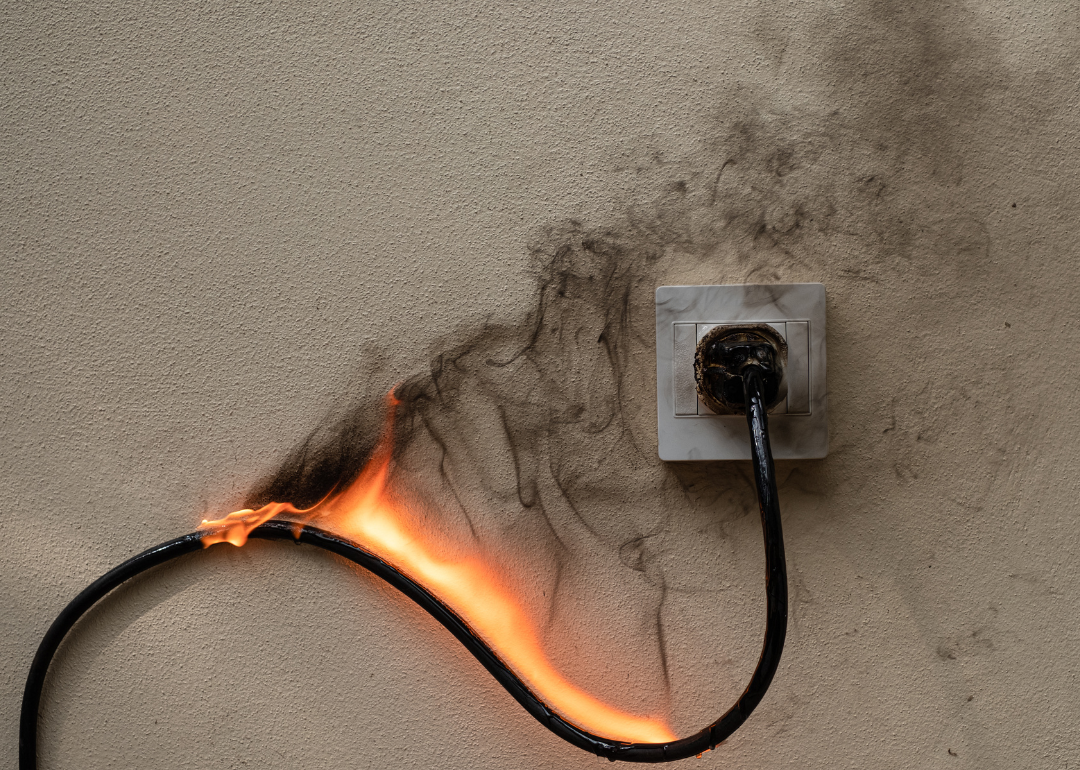
Thichaa // Shutterstock
#3. Electrical distribution and lighting equipment
An outlet with an on-fire cord connected to it.
– Percent of total house fires caused by electrical distribution and lighting equipment: 9%
– Percent of total house fire deaths: 16% (#4 leading cause)
– Percent of total house fire injuries: 10% (#3 leading cause)
– Percent of total direct house fire property damage: 18% (#1 leading cause)
Electrical malfunctions, such as arc faults, can occur in any electricity-powered equipment. An arc fault is a high-power discharge between eroded or corroded conductors. Such faults can occur within the walls of a home, especially if an electrical outlet has begun to degrade or was installed incorrectly.
A high level of electrical current can produce enough heat to ignite a fire. To prevent this type of house fire, look for worn-out appliance cords, damaged connectors, loose wires in junction boxes or electrical devices, and faulty switches.
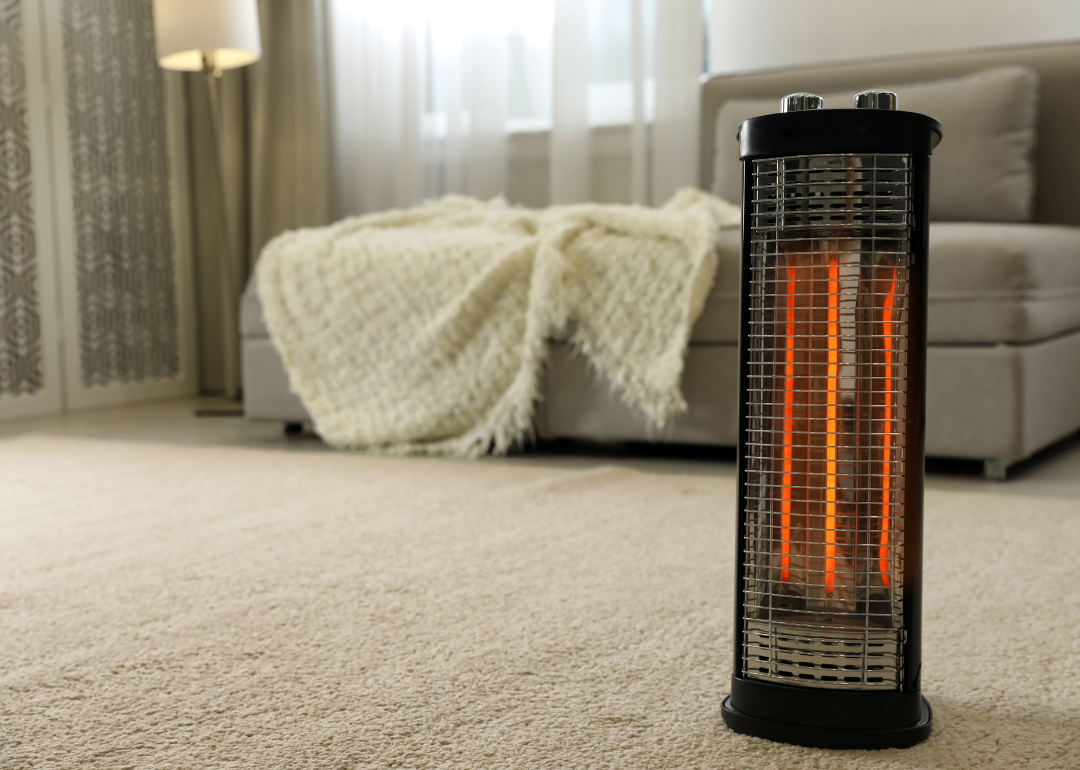
New Africa // Shutterstock
#2. Heating equipment
A modern electric halogen heater on the carpeted floor of a living room.
– Percent of total house fires caused by heating equipment: 13%
– Percent of total house fire deaths: 18% (#3 leading cause)
– Percent of total house fire injuries: 12% (#2 leading cause)
– Percent of total direct house fire property damage: 14% (#3 leading cause)
Heating equipment fires follow a clear seasonal pattern—they happen more often in December, January, and February. Stationary or portable space heaters account for more than 80% of deaths related to home heating fires.
Over half of such casualties result from leaving heating equipment too close to clothing, upholstered furniture, mattresses, or bedding. Another cause of these kinds of fires is the lack of proper cleaning and maintenance of fireplaces and central heating systems.
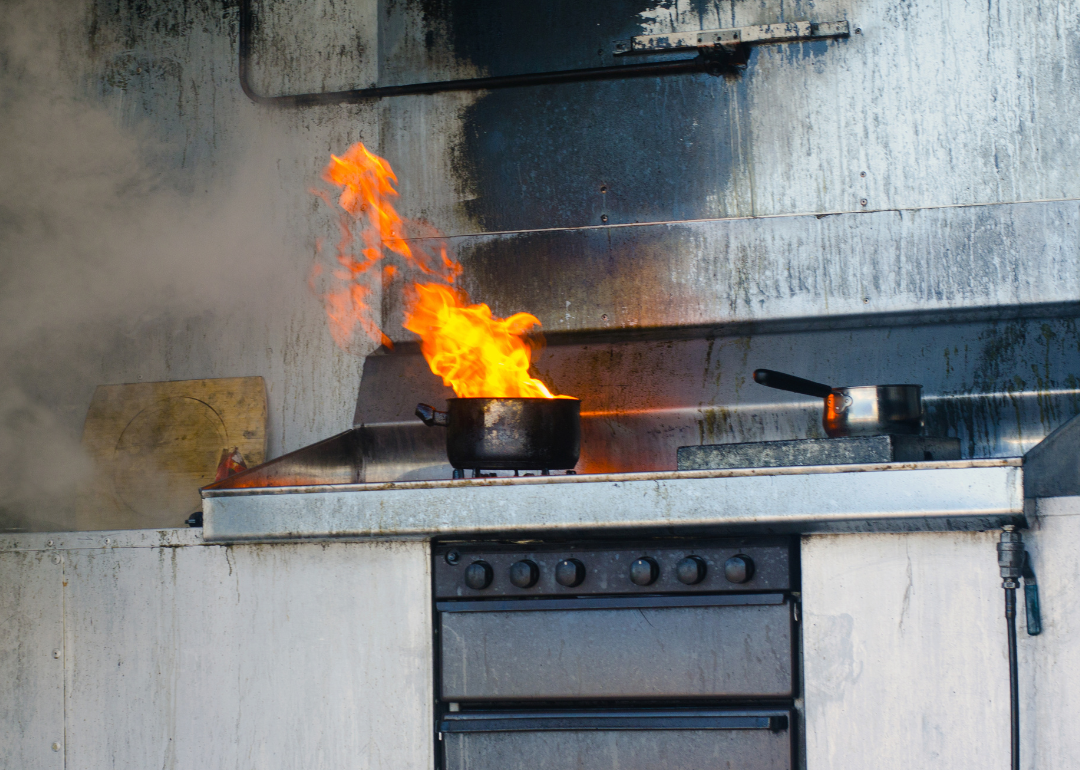
Canva
#1. Cooking
A pot on a stovetop left unattended on fire.
– Percent of total house fires caused by cooking: 49%
– Percent of total house fire deaths: 20% (#2 leading cause)
– Percent of total house fire injuries: 42% (#1 leading cause)
– Percent of total direct house fire property damage: 16% (#2 leading cause)
Even though most cooking-related fires are minor, an average of 470 were reported daily in 2018. The number of reported cooking fires peaks, perhaps unsurprisingly, during the Thanksgiving and Christmas holidays. More alarming still is that there were more cooking fire-related deaths in 2014-2018 than there were 30 years prior, despite advancements in electric and gas ranges and other cooking appliances during the intervening years. Commonly, people are napping or engaged in other activities when the fires start.
For proper risk prevention, avoiding food unsupervised on the stove, in the oven, or in other cooking appliances such as an air fryer or convection oven is crucial. Be aware that households with electrical ranges are at higher risk than those with gas ranges.
This story originally appeared on Westfield and was produced and
distributed in partnership with Stacker Studio.